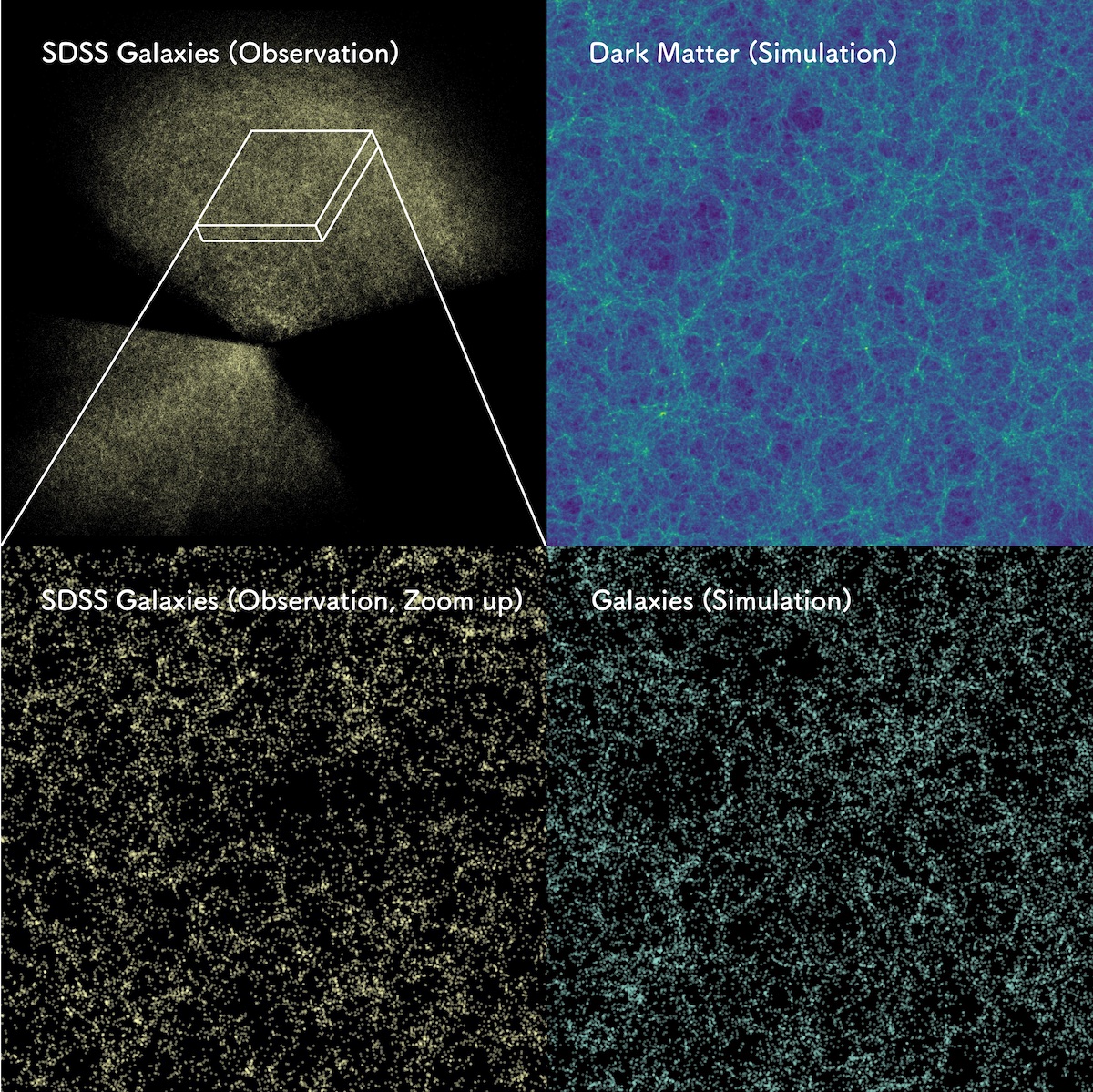Astronomers have tested a method for reconstructing the state of the early Universe by applying it to 4000 simulated universes using the ATERUI II supercomputer at the National Astronomical Observatory of Japan (NAOJ). They found that together with new observations the method can set better constraints on inflation, one of the most enigmatic events in the history of the Universe. The method can shorten the observation time required to distinguish between various inflation theories.
These results appeared as Masato Shirasaki et. al. “Constraining Primordial Non-Gaussianity with Post-reconstructed Galaxy Bispectrum in Redshift Space,” in Physical Review D on January 4, 2021.
(February 16, 2021)
 A new technique combining artificial intelligence trained by supercomputer simulations and astronomy Big Data has enabled astronomers to analyze data with undreamed of speed to determine the unknown characteristics of the Universe.
A new technique combining artificial intelligence trained by supercomputer simulations and astronomy Big Data has enabled astronomers to analyze data with undreamed of speed to determine the unknown characteristics of the Universe.